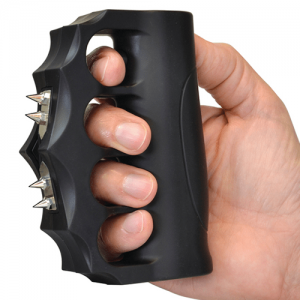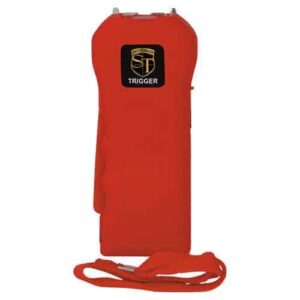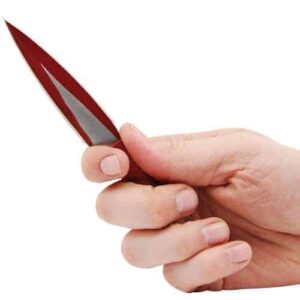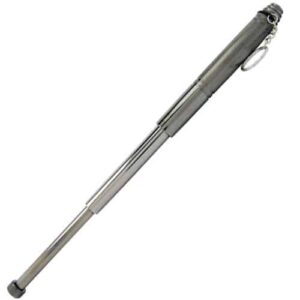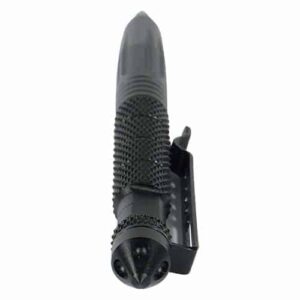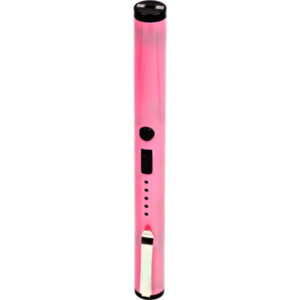In this article, we will explore the world of self-defense techniques using mace, a powerful tool that can empower you to protect yourself in threatening situations. From understanding the proper usage to mastering effective strategies, you will gain valuable insights into optimizing your personal safety. So, grab your attention and prepare to broaden your horizons in the realm of self-defense using mace!
Table of Contents
ToggleWhat is Mace?
Definition of Mace
Mace, in the context of self-defense, refers to a spray that contains oleoresin capsicum (OC), a concentrated extract from hot peppers. It is commonly used to protect oneself from potential attackers by temporarily immobilizing them. Mace is designed to cause extreme discomfort, inflammation, and temporary blindness, allowing the victim to escape from danger.
History of Mace as a Self Defense Weapon
The use of mace as a self-defense weapon has a rich history dating back to ancient civilizations. In ancient India, warriors would coat their arrows with chili peppers to incapacitate their enemies. Similarly, indigenous tribes in the Americas would use crushed chili peppers to create irritant sprays for protection.
In the modern era, the concept of mace as a self-defense weapon was developed in the 1960s by chemist Allan Lee Litman. Litman sought to create a non-lethal alternative to firearms that could effectively immobilize attackers. Since then, mace has become a popular and widely-used self-defense tool.
Different Types of Mace
There are various types of mace available on the market, each with its own unique characteristics. The most common forms of mace include pepper spray and tear gas. Pepper spray is the most widely used form of mace and contains a concentrated form of OC. Tear gas, on the other hand, contains chemicals that irritate the eyes, nose, and respiratory system, inducing tears and temporary incapacitation.
When choosing a mace product, it is important to consider factors such as spray range, spray pattern, and canister size. Some cans of mace come with additional features such as UV dye to aid in the identification of attackers. It is crucial to select a type of mace that suits your personal preferences and needs.
Choosing the Right Mace
Considerations When Selecting Mace
When selecting mace for self-defense, there are several important factors to consider. Firstly, it is crucial to choose a mace product that fits comfortably in your hand and is easy to deploy. Additionally, you should consider the spray range of the product, as this will determine the distance from which you can effectively disable an attacker.
Furthermore, it is advisable to choose a mace product that has a locking mechanism. This prevents accidental discharge and ensures that the spray is only released when intended. Lastly, check for any additional features such as built-in LED lights or carrying options to suit your individual needs.
Legal Restrictions and Regulations
Before purchasing and carrying mace, it is important to familiarize yourself with the legal restrictions and regulations in your jurisdiction. Laws and regulations regarding mace usage can vary greatly from one place to another, so it is crucial to know what is permitted in your area. Be sure to comply with all local laws to avoid legal consequences.
Recommended Brands and Models
There are many reputable brands that manufacture high-quality mace products for self-defense. Some popular and highly recommended brands include Sabre, Mace Brand, and Fox Labs. These brands offer a range of mace products that have been extensively tested and proven to be effective in real-life situations. It is advisable to read product reviews and seek recommendations from experts when selecting a specific brand and model.
Understanding Self Defense
Importance of Self Defense
Self-defense is a critical skill that everyone should possess. It empowers individuals to protect themselves and their loved ones from potential harm. By learning self-defense techniques and equipping oneself with the necessary tools, such as mace, individuals can increase their personal safety and security in various situations.
Key Principles of Self Defense
There are several key principles that underpin self-defense strategies. Firstly, awareness is crucial. Being aware of your surroundings and potential threats allows you to make informed decisions and take appropriate action when necessary. Additionally, it is important to practice good judgment and avoid potentially dangerous situations whenever possible.
Furthermore, self-defense techniques should be based on the goal of creating distance and buying time. The primary objective is to escape from danger rather than engage in physical confrontation. Lastly, confidence and mental preparedness play a vital role in self-defense. Developing a positive mindset and having the belief in your own ability to protect yourself can greatly increase your chances of success in a dangerous situation.
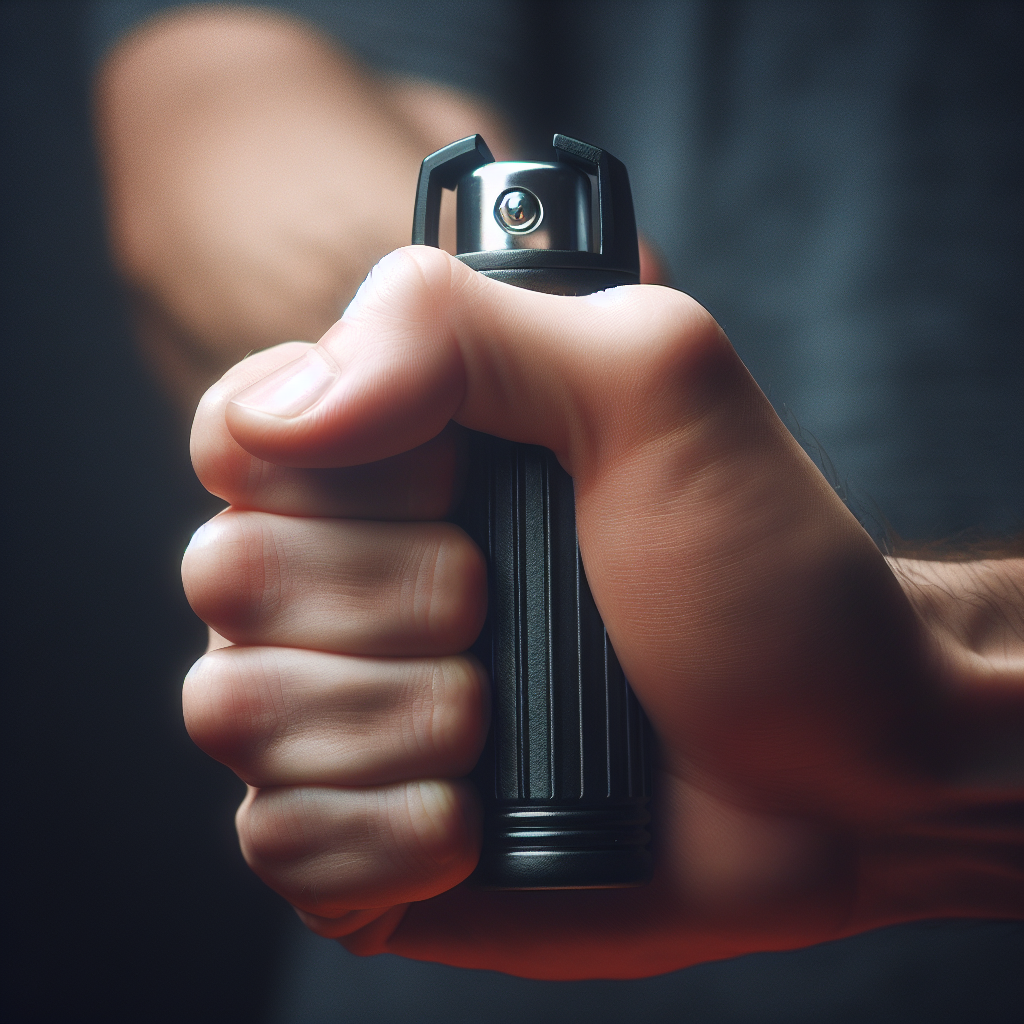
Proper Usage of Mace
Legal and Ethical Considerations
When using mace for self-defense, it is essential to consider the legal and ethical implications of your actions. Mace should only be used in situations where your personal safety is at risk or as a last resort. It is important to use mace responsibly and proportionately, ensuring that you do not cause unnecessary harm or engage in excessive force.
Furthermore, it is crucial to realize that mace is not a foolproof solution and may not be effective in all situations. Familiarize yourself with the limitations of mace and understand that other self-defense techniques may be necessary. It is advisable to consult local laws and seek professional guidance to ensure you are using mace within the bounds of the law and ethical guidelines.
Basic Instructions for Safe Use
To use mace effectively and safely, it is important to familiarize yourself with basic instructions for use. Firstly, ensure that the canister is properly secured and easily accessible. Familiarize yourself with the activation mechanism and ensure that it can be easily operated under stress.
When using mace, aim for the attacker’s face, specifically the eyes, nose, and mouth. Use short bursts of spray to maximize the impact and create disorientation. Remember to practice proper hand position and maintain a firm grip to prevent accidental discharge and ensure accurate targeting.
Choosing the Right Spraying Technique
The spraying technique used with mace can greatly affect its effectiveness. The most common spraying techniques include the straight stream, cone spray, and fogger spray.
The straight stream is ideal for situations where accuracy and precision are necessary. It produces a concentrated stream of spray that can reach further distances. The cone spray, on the other hand, creates a wider dispersal pattern, making it useful in close-quarters encounters. Lastly, the fogger spray releases the spray in a mist-like form, creating a cloud of irritant particles that can cover a large area.
When choosing a spraying technique, consider the environment, distance to the attacker, and potential bystanders. Practice using different techniques to determine which one works best for you.
Targeting Vulnerable Areas
Identifying Vulnerable Areas on an Attacker
Understanding the vulnerable areas on an attacker’s body is crucial when using mace for self-defense. The eyes are the most vulnerable and sensitive area, making them an ideal target for mace. A direct hit to the eyes can cause temporary blindness, intense pain, and disorientation.
Other vulnerable areas include the nose, mouth, and throat. Spraying mace into these areas can cause difficulty in breathing and a burning sensation, further incapacitating the attacker. It is important to aim for these areas to maximize the effectiveness of mace as a self-defense tool.
Effective Techniques for Targeting Eyes
When targeting an attacker’s eyes with mace, it is important to aim for direct contact. When deploying mace, hold the canister at eye level and spray in short bursts, ensuring that the spray reaches the attacker’s eyes. It is crucial to maintain a steady hand and stay focused on the target.
Additionally, it is advisable to aim slightly above the eyes to ensure that gravity aids in the downward spread of the irritant. This increases the chances of effectively incapacitating the attacker. Practice targeting techniques in a controlled environment to improve your accuracy and speed.
Strategies for Targeting Other Vital Areas
In addition to targeting the eyes, there are other vital areas on an attacker’s body that can be targeted with mace. The nose and mouth are particularly vulnerable, as they are directly connected to the respiratory system. By spraying mace in these areas, you can obstruct the attacker’s breathing, causing further disorientation and incapacitation.
The throat is another vulnerable area that can be targeted. A direct hit to the throat can cause intense pain and difficulty in breathing. By targeting the throat, you can further immobilize the attacker and create an opportunity to escape.
Defensive Maneuvers
Creating Distance and Buying Time
When faced with a potential attacker, the primary goal is to create distance and buy time to escape. One effective defensive maneuver is the use of verbal commands. Firmly and confidently tell the attacker to back off or give a warning that you are armed with mace. This can deter potential attackers and give you a chance to create distance.
If the situation escalates and the attacker continues to advance, it is important to use physical techniques to create distance. Pushing the attacker away, utilizing strikes and kicks, or employing joint manipulation techniques can give you the opportunity to escape to a safer location.
Using Mace as a Deterrent
Mace can act as a powerful deterrent when dealing with potential attackers. By visibly displaying your mace canister or informing the attacker that you have mace, you may discourage them from proceeding with their intended harm. Many attackers are seeking easy targets, and the presence of mace could make them think twice before confronting you.
Remember, however, that mace should only be used as a last resort when your personal safety is in immediate danger. Using mace as a deterrent should always be the preferred option, if possible.
Escaping and Seeking Help
Ultimately, the best course of action in a self-defense situation is to escape and seek help. While mace can immobilize an attacker temporarily, it is important to create an opportunity to flee to safety. Once you have created distance from the attacker, immediately look for well-lit and populated areas or seek assistance from nearby individuals who can provide help.
Remember to report the incident to the authorities as soon as possible, providing a detailed description of the attacker and any relevant information that can aid in their apprehension.
Practicing Self Defense with Mace
Solo Training Exercises
Practicing self-defense techniques with mace is crucial to increase familiarity and proficiency. Solo training exercises can help you develop the necessary muscle memory and confidence to respond effectively in a threatening situation.
Some solo training exercises for using mace include practicing drawing and deploying the canister from different positions, practicing different spraying techniques, and simulating potential attack scenarios. It is important to practice these exercises in a controlled and safe environment to ensure the technique is executed properly.
Partner Drills for Realistic Scenarios
To further enhance your self-defense skills, partner drills can be incorporated into your training routine. Partner drills simulate realistic self-defense scenarios and allow you to practice your techniques under controlled conditions.
Partner drills can include role-playing scenarios where one person acts as the attacker and the other person defends themselves using mace. This allows you to practice targeting vulnerable areas, creating distance, and executing defensive maneuvers in a safe and controlled manner.
Remember to always prioritize safety during partner drills and communicate clearly with your training partner. Respect each other’s boundaries and wear appropriate protective gear to minimize the risk of injury.
Additional Self Defense Tips
Awareness and Preparedness
Maintaining a high level of awareness and preparedness is vital in self-defense. Always be alert to your surroundings, avoid distractions, and trust your instincts. By being aware of potential threats, you can take proactive steps to avoid dangerous situations.
Additionally, preparation is key. Consider taking self-defense classes or practicing martial arts to develop confidence, physical fitness, and the ability to respond effectively in a threatening situation. Regular exercise and maintaining a healthy lifestyle also contribute to overall personal safety.
Non-confrontational De-Escalation Techniques
In some situations, de-escalation techniques can be effective in diffusing potential confrontations. Verbal techniques such as calmly talking and using a non-threatening tone can help to defuse tension and avoid physical altercations. Maintaining a calm and composed posture and avoiding aggressive behavior can demonstrate that you are not a threat.
However, it is important to remember that de-escalation techniques may not always work, especially in high-stress situations. Trust your instincts and, if necessary, resort to using mace to protect yourself.
Seeking Professional Training
To further enhance your self-defense skills, seeking professional training from certified instructors is highly recommended. Professional trainers can provide expert guidance, teach you advanced techniques, and help simulate realistic self-defense scenarios to prepare you for potential threats.
Consider researching reputable self-defense programs in your area and choose a training course that aligns with your goals and needs. Remember to approach training with an open mind and a willingness to learn and adapt.
Proper Maintenance and Storage
Cleaning and Inspecting Mace
Proper maintenance and regular inspections are important to ensure the reliability and effectiveness of your mace. Begin by inspecting the canister for any signs of damage or leakage. If you notice any issues, it is advisable to replace the canister immediately.
Cleaning is also important to remove any debris or residue that may affect the device’s functionality. Use a clean cloth or tissue to wipe the nozzle and ensure it is clear of any blockages. Avoid using harsh chemicals or solvents as they may damage the canister.
Best Practices for Storage
Proper storage is crucial to maintain the integrity of your mace. Store the canister in a cool and dry place, away from direct sunlight or extreme temperatures. Avoid storing it in areas prone to excessive humidity.
Additionally, ensure that the canister is easily accessible and within reach in case of an emergency. A well-designed holster or belt clip can provide a secure and convenient storage solution.
Expiration Dates and Replacement
Mace products have expiration dates, and it is important to regularly check and replace them accordingly. Over time, the potency of the OC in mace can degrade, rendering it less effective. Check the expiration date indicated on the canister and replace it before it expires.
It is advisable to keep track of the purchase date or write the date of purchase on the canister to monitor its lifespan. Regularly inspect your mace to ensure that it remains in optimal condition and replace it when necessary.
Real-Life Self Defense Stories
Cases where Mace was Effectively Used
There have been numerous real-life instances where individuals successfully used mace as a self-defense tool. One such case involved a woman who used mace to fend off an attacker who was attempting to rob her. By deploying the mace and targeting the attacker’s face, she was able to create an opportunity to escape and seek help.
In another instance, a jogger encountered an aggressive stray dog and used mace as a means of self-defense. The mace allowed the jogger to immobilize the dog temporarily, preventing further harm.
Interviews and Testimonials
Many individuals who have utilized mace for self-defense purposes have shared their experiences through interviews and testimonials. These stories highlight the effectiveness of mace in immobilizing attackers and creating opportunities for escape. Hearing from those who have successfully used mace can provide valuable insights and encouragement for individuals seeking to enhance their personal safety.
Remember to research and read testimonials from reliable sources to gain a well-rounded understanding of the benefits and limitations of mace as a self-defense tool.



